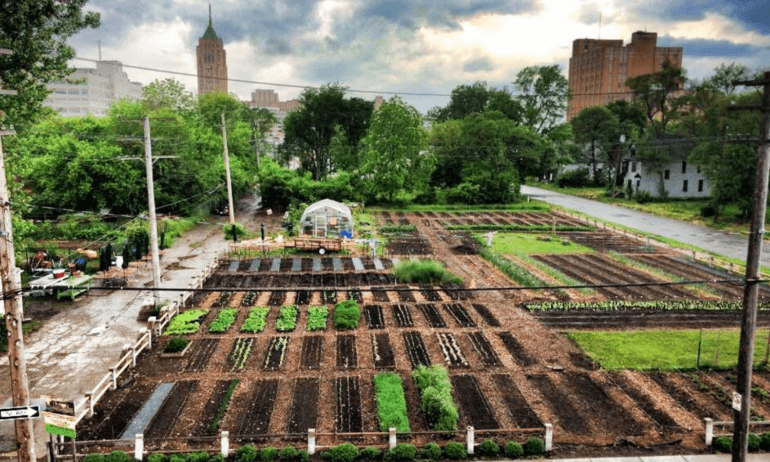City Blooming for Dummies
City Blooming for Dummies
Blog Article
A Biased View of City Blooming
Table of Contents10 Simple Techniques For City BloomingSome Of City BloomingAll about City BloomingThe smart Trick of City Blooming That Nobody is Talking About6 Simple Techniques For City Blooming
Interested in expanding food for sale in the City of Chicago? Below is a checklist of often asked questions relating to the guidelines and regulations that growers need to take into consideration when preparing a metropolitan farming project.
The zoning change does not change any type of various other codes managing composting, structure permits, acquiring or leasing City owned residential or commercial property, business licenses or ecological contamination. There are existing codes that regulate these concerns and they stay completely result and may apply to your task. Community yards are generally had or handled by public entities, public companies or community-based companies and preserved by volunteers.
Urban ranches expand food that is meant to be offered, either on a not-for-profit or for-profit basis. Because of their commercial purpose, metropolitan farms need a company certificate. Yes. A community garden is allowed to market surplus generate that was expanded on site if the sales are accessory or subservient to the garden's main purpose defined over.
The smart Trick of City Blooming That Nobody is Discussing
Composting is enabled but only for plant material that is created and made use of on website. The quantity of garden compost material can not go beyond 25 cubic backyards at any provided time according to the criteria in 7-28-715 of the City's Municipal Code. Yes. Because the soil at most brand-new yard sites requires modifying, compost, soil, wood chips, or other products can be acquired to build or improve the expanding space - urban gardening.

If a building authorization is required after that the hoophouse will certainly be considered an accessory structure. You can find out more concerning the building license requirements by calling the Department of Buildings. The 25,000-square-foot size limitation is planned to avoid a solitary area garden from dominating a provided block or taking away from the block's existing household or industrial personality.
The restriction does not put on yards found in Public Open Room (POS) districts. Can there be greater than one neighborhood garden that is 25,000 square feet on a single block? Yes. The dimension limit relates to specific yards, not to individual blocks. No. Fence is not called for, nonetheless, yards that have big car parking areas may be needed to set up fence or other landscaping features.
Fascination About City Blooming
B1 & B2 districts require that all business usage tasks be conducted indoors. Is fencing required for city farms? Fences might be needed, along with landscape design and screening, for specific parking areas and outdoor job or storage space locations depending on location and the specific task taking area.
Urban ranches call for structure permits and zoning authorizations prior to building (sustainable gardening). Other forms of city review might be called for depending on details frameworks, tasks, dimension, landscaping, licensing, public heath and stormwater management problems.
Yes. The kind of license is identified by what is happening at the site. The Department of Company Matters and Consumer Security can help figure out the specific sort of service permit that's called for. Yes. Off street car park is needed for many industrial projects in Click This Link Chicago. The called for number of garage is based on the number of staff members working with site and not the square video footage of the growing area.
Some Known Details About City Blooming

An urban farm can sell garden compost material produced on site, nevertheless, the operation must abide with the guidelines in 7-28-715 of the Chicago Municipal Code. Aquaponic systems are permitted indoors on metropolitan ranches in several zoning areas.
As much as 5 hives or swarms of honey may be maintained as an accessory usage. Beekeepers need to register with the Illinois Department of Agriculture. To learn more regarding the suggested zoning modification you might contact the Division of Real Estate and Economic Advancement, Bureau of Preparation and Zoning at 312.744.8563.
Farming in cities and metropolitan locations A metropolitan farm in Chicago. Urban agriculture refers to various practices of cultivating. https://amber-gnu-kr6lr9.mystrikingly.com/blog/city-gardening-cultivating-green-spaces-in-urban-jungles, processing, and distributing food in metropolitan locations. The term likewise relates to the location activities of pet husbandry, aquaculture, beekeeping, and cultivation in a metropolitan context. Urban agriculture is distinguished from peri-urban agriculture, which takes area in backwoods at the side of suburban areas.
The Main Principles Of City Blooming
, that look for to create social networks started on a shared ethos of nature and area holism. These networks can develop by method of formal institutional support, coming to be incorporated into local town planning as a "change community" activity for sustainable city growth.
In either situation, the much more straight access to fresh vegetable, fruit, and meat items that might be know with urban agriculture can boost food safety and security and food safety while reducing food miles, resulting in reduced greenhouse gas discharges, thereby adding to climate change mitigation. A few of the initial evidence of urban farming originates from Mesopotamia.
Report this page